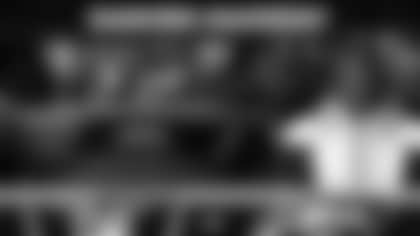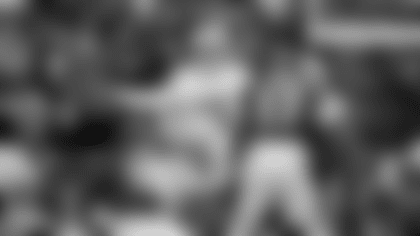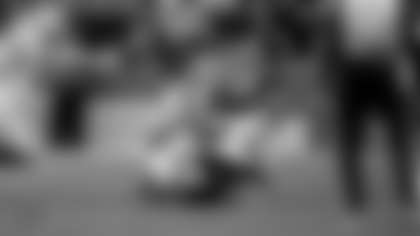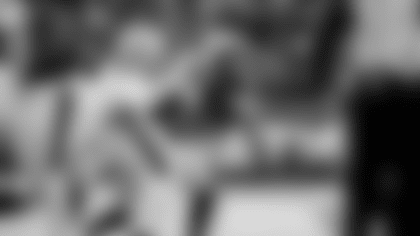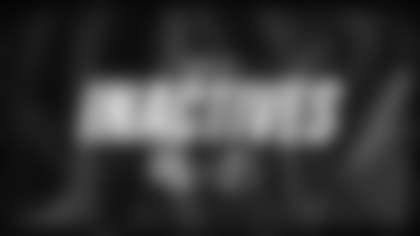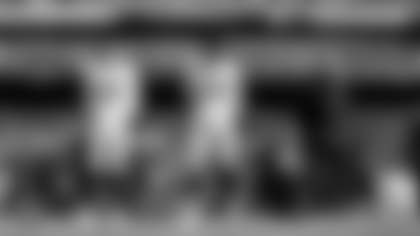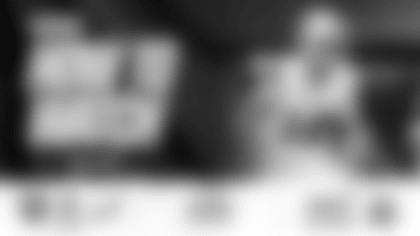A red challenge flag lies on the field after being thrown during the Oakland Raiders 2015 week 15 regular season NFL football game against the Green Bay Packers on Sunday, Dec. 20, 2015 in Oakland, Calif. (Paul Spinelli via AP).
The League will employ a system of Instant Replay Review to aid officiating as defined below. The following procedures will be used:
Article 1. COACHES' CHALLENGE.In each game, a team will be permitted two challenges that will initiate Instant Replay reviews. The Head Coach will initiate a challenge by throwing a red flag onto the field of play before the next legal snap or kick. Each challenge will require the use of a team timeout. If a challenge is upheld, the timeout will be restored. A challenge will only be restored if a team is successful on both of its challenges, in which case it shall be awarded a third challenge, but a fourth challenge will not be permitted under any circumstances.
A team may challenge any reviewable play identified in Article 5 below, except when the on-field ruling is:
(a) A score for either team,
(b) an interception,
(c) a fumble or backward pass that is recovered by an opponent or goes out of bounds
through an opponent's end zone, or
(d) a muffed scrimmage kick recovered by the kicking team.
A team may not challenge a reviewable play:
(a) After the two minute warning of each half,
(b) throughout any overtime period,
(c) after committing a foul that delays the next snap, and
(d) after exhausting all of its challenges or timeouts.
If a team initiates a challenge when it is not permitted to do so, it will be charged a timeout.
Penalty: For initiating a challenge when a team has exhausted its timeouts: Loss of 15 yards.
Article 2. REPLAY OFFICIAL'S REQUEST FOR REVIEW.A Replay Review will be initiated by a Replay Official from a Replay Booth comparable to the location of the coaches' booth or Press Box when the on-field ruling is:
(a) A score for either team,
(b) an interception,
(c) a fumble or backward pass that is recovered by an opponent or goes out of bounds
through an opponent's end zone, or
(d) a muffed scrimmage kick recovered by the kicking team.
A Replay Review will be initiated by a Replay Official:
(e) After the two minute warning of each half, and
(f) throughout any overtime period.
There is no limit to the number of Replay Reviews that may be initiated by the Replay Official. His ability to initiate a review will be unrelated to the number of timeouts that either team has remaining, and no timeout will be charged for any review initiated by the Replay Official. The Replay Official must initiate a review before the ball is next legally put in play.
The Replay Official and designated members of the Officiating Department at the League office may consult with the on-field officials to provide information on the correct application of playing rules, including appropriate assessment of penalty yardage, proper down, and status of the game clock.
**
Article 3. REVIEWS BY REFEREE. **All Replay Reviews will be conducted by the Referee on a field-level monitor after consultation with the covering official(s). During the review, the Referee will consult with designated members of the Officiating department at the League office. A decision will be reversed only when the Referee has *clear and obvious visual evidence *available to him that warrants the change.
Each review will be a maximum of 60 seconds in length, timed from when the Referee begins his review of the replay at the field-level monitor.
All reviewable aspects of the play may be examined and are subject to reversal, even if not identified in a coach's challenge or if not the specific reason for a Replay Official's request for review.
Article 4. NON-REVIEWABLE PLAYS.The following play situations are not reviewable:
(a) Fouls, except for Article 5 (g) below.
(b) Spot of the ball and runner:
(1) Runner ruled down by defensive contact or out of bounds (not involving
fumbles or the line to gain).
(2) The position of the ball not relating to first down or goal line.
(3) Whether a runner's forward progress was stopped before he went out of bounds or lost
possession of the ball.
(4) Whether a runner gave himself up.
(c) Miscellaneous:
(1) Field Goal or Try attempts that cross above either upright without touching
anything.
(2) Erroneous whistle.
(3) Spot where an airborne ball crosses the sideline.
(4) Whether a player was blocked into a loose ball.
(5) Advance by a player after a valid or invalid fair catch signal.
(6) Whether a player created the impetus that put the ball into an end zone.
Article 5. REVIEWABLE PLAYS.The Replay System will cover the following play situations:
(a) Plays involving possession.
(b) Plays involving touching of either the ball or the ground.
(c) Plays governed by the goal line.
(d) Plays governed by the boundary lines.
(e) Plays governed by the line of scrimmage.
(f) Plays governed by the line to gain.
(g) Number of players on the field at the snap, even when a foul is not called.
(h) Game administration:
(1) Penalty enforcement.
(2) Proper down.
(3) Spot of a foul.
(4) Status of the game clock.
In situations in which time is deemed to have expired during or after the last play of the first or second half, or of an overtime period in the preseason or regular season, or of an overtime half in the postseason, a timing error is defined as having occurred only when the visual evidence demonstrates that more than one second should be put on the clock.
In the first half, time shall be restored only if the additional play will be a snap from scrimmage. In the second half, time shall be restored only if it is a one-score game (eight points or less), and the additional play will be a snap from scrimmage by the team that is behind in the score, or by either team if the score is tied. A correction of a timing error for a team timeout may be made only if there is visual evidence of an official's signal.
If an on-field ruling of a dead ball (down by contact, out of bounds, or incomplete forward pass) is changed, the ball belongs to the recovering player at the spot of the recovery, and any advance is nullified. The recovery must occur in the continuing action following the loss of possession. If the ball goes out of bounds in an end zone, the result of the play will be either a touchback or a safety. If the Referee does not have clear and obvious visual evidence as to which player recovered the loose ball, or that the ball went out of bounds, the ruling on the field will stand.















